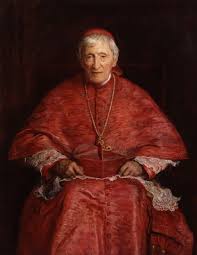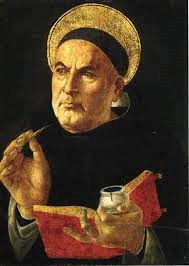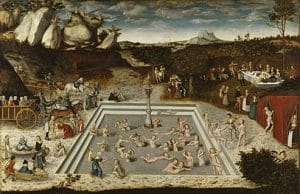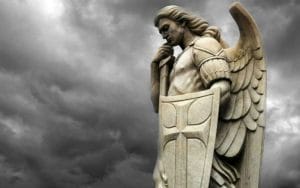In the days leading up to now St. John Henry Newman’s beatification in 2010, NPR’s All Things Considered turned its consideration towards the question as to whether the Cardinal may in fact have been gay. Never one to miss the opportunity to promote the LGBT agenda, Fr. James Martin retweeted the article on the eve of Newman’s canonization saying, “This doesn’t imply that the man who will become a saint tomorrow ever broke his promise of celibacy. And we may never know for sure. But his relationship with Ambrose St. John is worthy of attention. It isn’t a slur to suggest that Newman may have been gay.” Although no one in the Church hierarchy is likely to correct Fr. Martin, it is both a slur and manifestly false to suggest that the saint may have been gay. A comment such as this is not only disingenuous, but reveals the lavender glasses that color everything that Fr. Martin says and reveals his animus for true Catholic teaching. In the 2010 NPR piece, Fr. Martin was interviewed and offered that, “It is church teaching that a gay person can be holy, and a gay person can be a saint. And it’s only a matter of time before the church recognizes one publicly.” This reveals a serious flaw in his thinking and shows why he is ultimately unfit to minister to those people who struggle with same sex attraction.
The Saints and Heroic Virtue
The second step in the process of canonization is to be declared Venerable. This declaration, which, in Newman’s case, occurred in 1991, declares that the man exercised all of the virtues, both theological and natural to a heroic degree. The point of such an examination is to show how deeply grace had penetrated the man’s life enabling him to practice the moral virtues with ease and the theological virtues eminently. Among these natural virtues, chastity plays a key role meaning that, in Newman’s case, the Church has declared that he practiced chastity to a heroic degree. And herein lies the problem with Fr. Martin’s hypothesis, both regarding the new saint and any canonized saint in the future: you cannot exercise chastity to a heroic degree and also be gay.
This may seem rather harsh, until we examine the nature of virtue in general. The role of virtue in the moral life is to habitually order our faculties towards their proper end. These powers of the soul “train” the lower faculties to respond in accord with right reason. The man who struggles with disordered anger, or what we would call the vice of anger, by developing the virtue of meekness not only is able to keep himself from angry outbursts, but actually so governs his feelings of anger that it is only felt when it is reasonable to do so. A similar thing can be said about all of our other vices or disordered inclinations including Same-Sex Attraction. Just as meekness roots out any disordered anger, chastity roots out all disordered manifestations of our sexual faculties and orders them towards their proper ends. The man who is truly chaste would no longer experience SSA.

Notice that I did not perform any of the usual moral hairsplitting that many people make regarding this topic between homosexual activity and the vice of SSA. While this may have some value in assessing personal culpability, it has no place when it comes to the virtue of chastity. To employ such a distinction, such as Fr. Martin does in this case only serves to muddy the moral waters making chastity harder, not easier. It all stems from an error in thinking that chastity and celibacy are the same thing. But they are most certainly distinct. Celibacy has to do with restraining the exterior actions. Chastity has to do with properly ordering interior inclinations. A man may be celibate without being chaste, but an unmarried man cannot be chaste without also being celibate. Fr. Martin seems to suggest that St. John Henry Newman fell into the former category—celibate without being chaste. To suggest that a canonized saint wasn’t chaste is a slur, especially given that the Church has declared him to be a man of heroic chastity.
Deep down, Fr. Martin knows all this. This is his motivation for trying to change the designation of SSA from disordered to differently ordered. If it is merely that there is a different ordering, then the chaste person could in fact experience SSA. But if it is disordered then it will be rooted out as the person grows in chastity. There is no reason why a person who struggles with SSA (or to use Fr. Martin’s designation of gay) couldn’t become a Saint someday, but it will only happen after they have removed that vice (and all the others) from their lives. In fact, there may already be some Saint that had this difficulty at some point, but to suggest that we might someday have a gay saint is like saying that we already have a fornicating Saint in St. Augustine. St. Augustine is a Saint because he became chaste and rooted out all the sexual vices he had in his soul.
Blinded by the Lavender Light
All of this reveals why Fr. Martin is ill-suited to minister to those who have SSA. All he can see is gay. In examining the life of John Henry Newman, it is quite obvious that he deeply loved Fr. Ambrose St. John. But it is only someone who sees all things in a lavender light that would mistake the love of friendship with erotic love. The aforementioned St. Augustine, on losing a friend said:
I was amazed that other mortals went on living when he was dead whom I had loved as though he would never die, and still more amazed that I could go on living myself when he was dead – I, who had been like another self to him. It was well said that a friend is half one’s own soul. I felt that my soul and his had been but one soul in two bodies, and I shrank from life with loathing because I could not bear to be only half alive; and perhaps I was so afraid of death because I did not want the whole of him to die, whom I had love so dearly.
This seems very similar to what Newman said at the loss of his friend “I have always thought no bereavement was equal to that of a husband’s or a wife’s but I feel it difficult to believe that anyone’s sorrow can be greater than mine.” Would Fr. Martin have us believe that St. Augustine was gay or bisexual? Or is it, that he is fundamentally incapable of acknowledging that there is a proper, non-sexual love between same sex persons in friendship? One of the ways in which chastity is increased in the person with SSA is to acknowledge that to the extent that his love for the other person is real, it is really a disordered love of friendship. Once this is realized the person is able to develop a healthy and ordered love for the other person. What makes Fr. Martin unsuited then to help these people is that he would not admit to the true love of friendship. Otherwise he would not make such a stupid comment about St. John Henry Newman, but put him forward as an example of how those with SSA might purify their love for a person of the same sex through authentic friendship.















